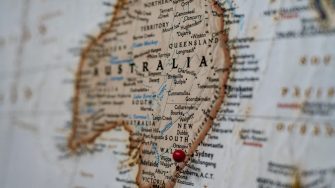
Overview
The UNSW Field Methods and Mapping (GEOS2131) course covers practical geological mapping techniques, general field skills, and the integration of stratigraphic, lithological, structural and paleontological concepts. The course integrates theoretical knowledge with a six-day fieldwork exercise in the upper Hunter Valley.
During this course, you’ll have the opportunity to use aerial photography to map an area of the Hunter Valley. On the field trip, you’ll be introduced to the geological mapping of a 16-20km2 area as part of a group of between two to six students. The fieldwork conducted will expose you to the importance and subtle difficulties of geological mapping and stratigraphic interpretation. It will also improve your ability to work harmoniously in a group of fellow students of mixed abilities.
Field mapping is a vital skill for all of the natural sciences and, indeed, for many other disciplines. Mapping is a key part of practice at all levels and scales, providing the baseline data for further detailed analysis. Geological field mapping is the process of selecting an area and identifying all geological aspects to produce a report or map. Throughout the Field Methods and Mapping course, you’ll learn the three phases of executing geological mapping, including planning, data collection and reporting.
This course is made up of two practical elements:
- Learning to use stereographic air photos for geological mapping.
- Undertaking geological mapping in the field, using available techniques and technologies.
Course breakdown
At the successful completion of this course, you’ll be able to:
- undertake geological field mapping to collect data in an efficient and safe manner
- identify and describe basic sedimentary and volcanic rocks, and geological structures in the field
- accurately measure the orientation of geological features using a Brunton compass
- interpret field data and observations to infer geological history over a 15km2 mapping area
- construct a geological map based upon field data and observations and aerial photography interpretation
- communicate results and ideas in both oral format and as a formal geological report
- work effectively as part of a group to conduct fieldwork, interpret data, and present ideas.
Field Methods and Mapping is a practical course with face-to-face learning and online readings. The main assessment tasks involve developing an understanding of stratigraphy, regional variations and complications brought about by changes across space and time.
Career opportunities
Mapping, of any sort, is a critical skill in job markets around the world. Specifically, geological mapping is used in mining, mineral and petroleum resources. The ability to conceptualise in 2D, 3D and 4D provides training for a broad conceptual ability.
Relevant roles
- Exploration
- Scientific research
- Risk analysis
- Construction
- Environmental assessment
- Rehabilitation
- Finance
